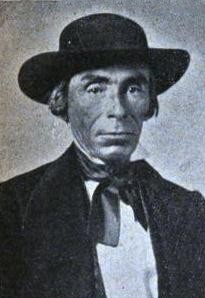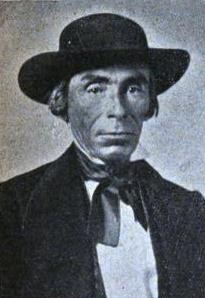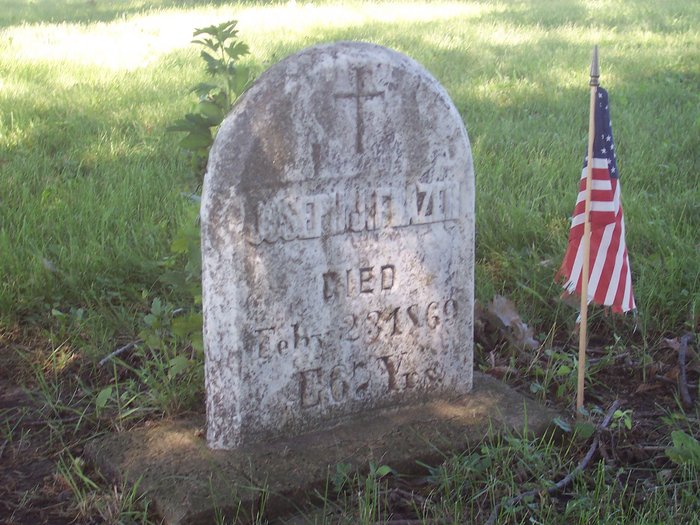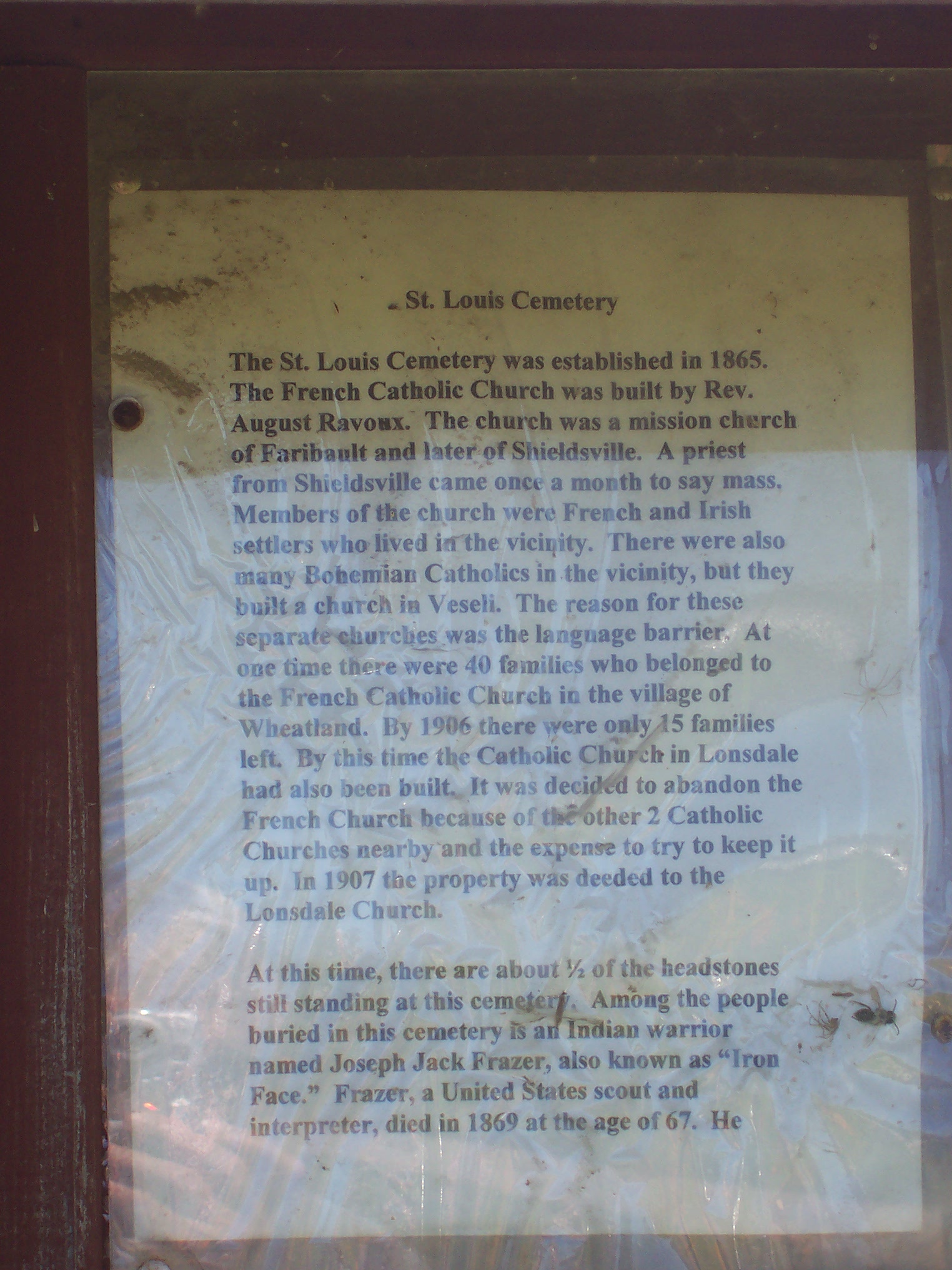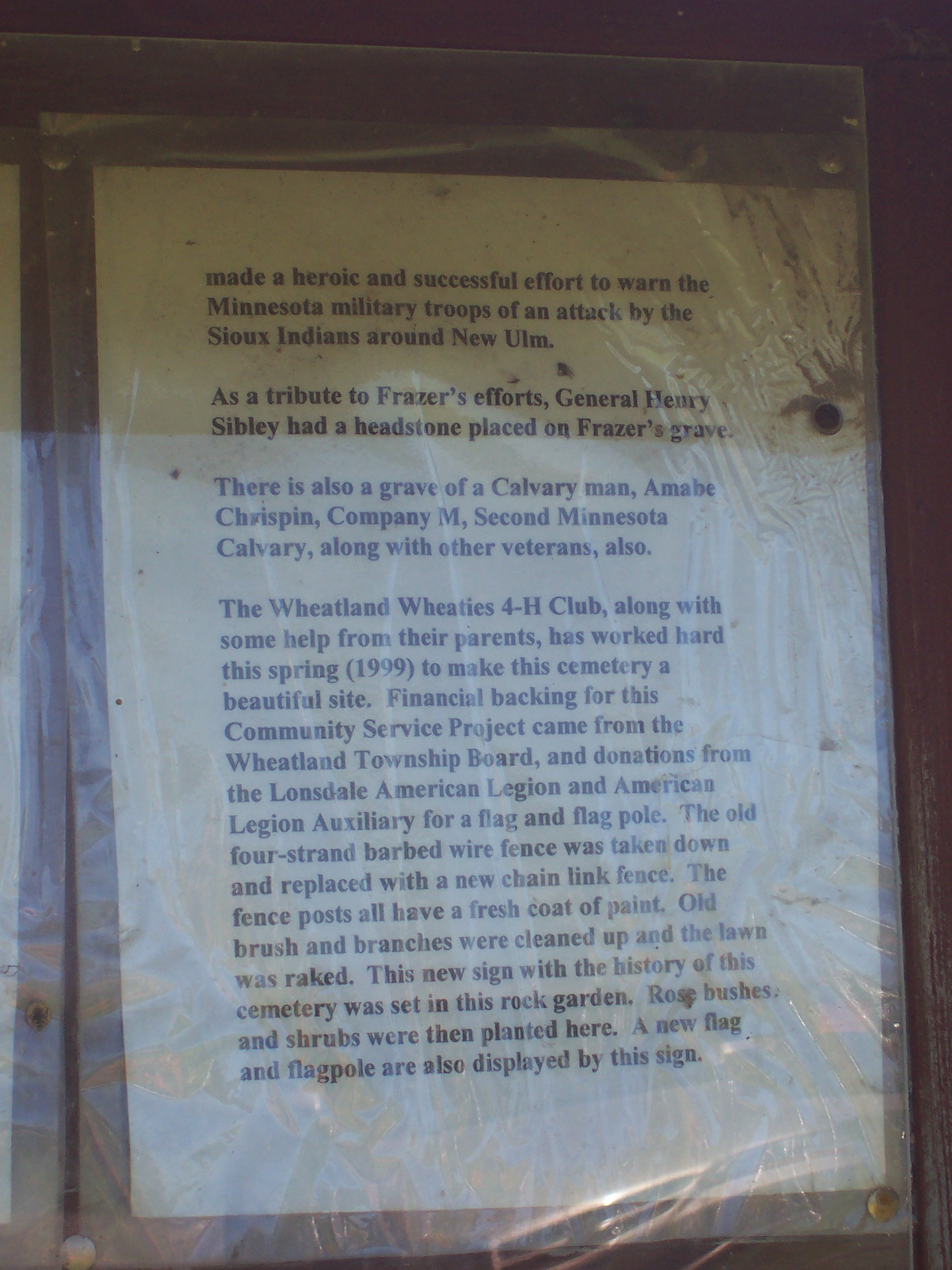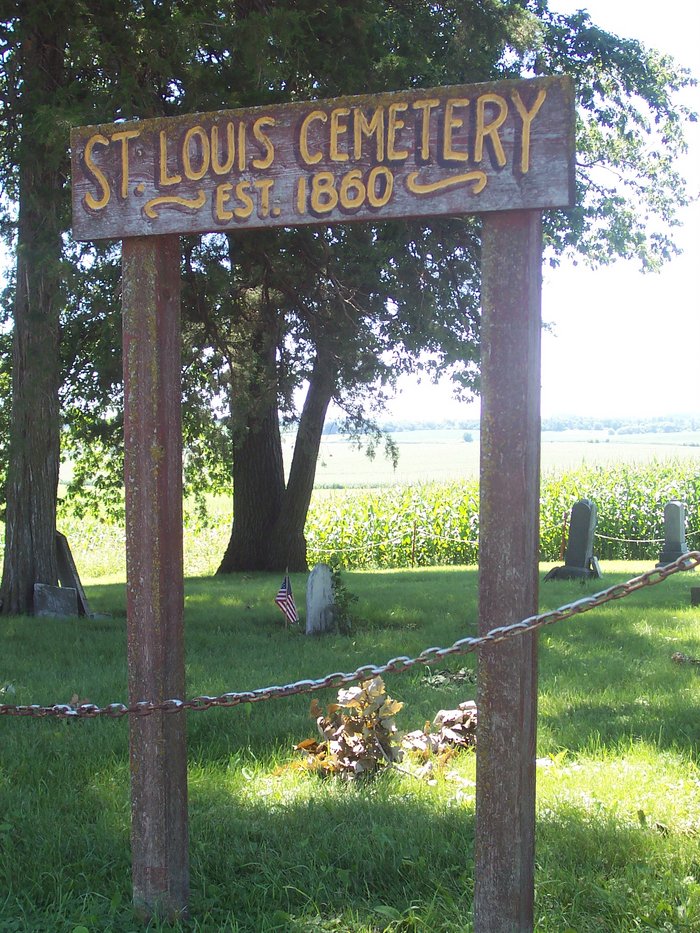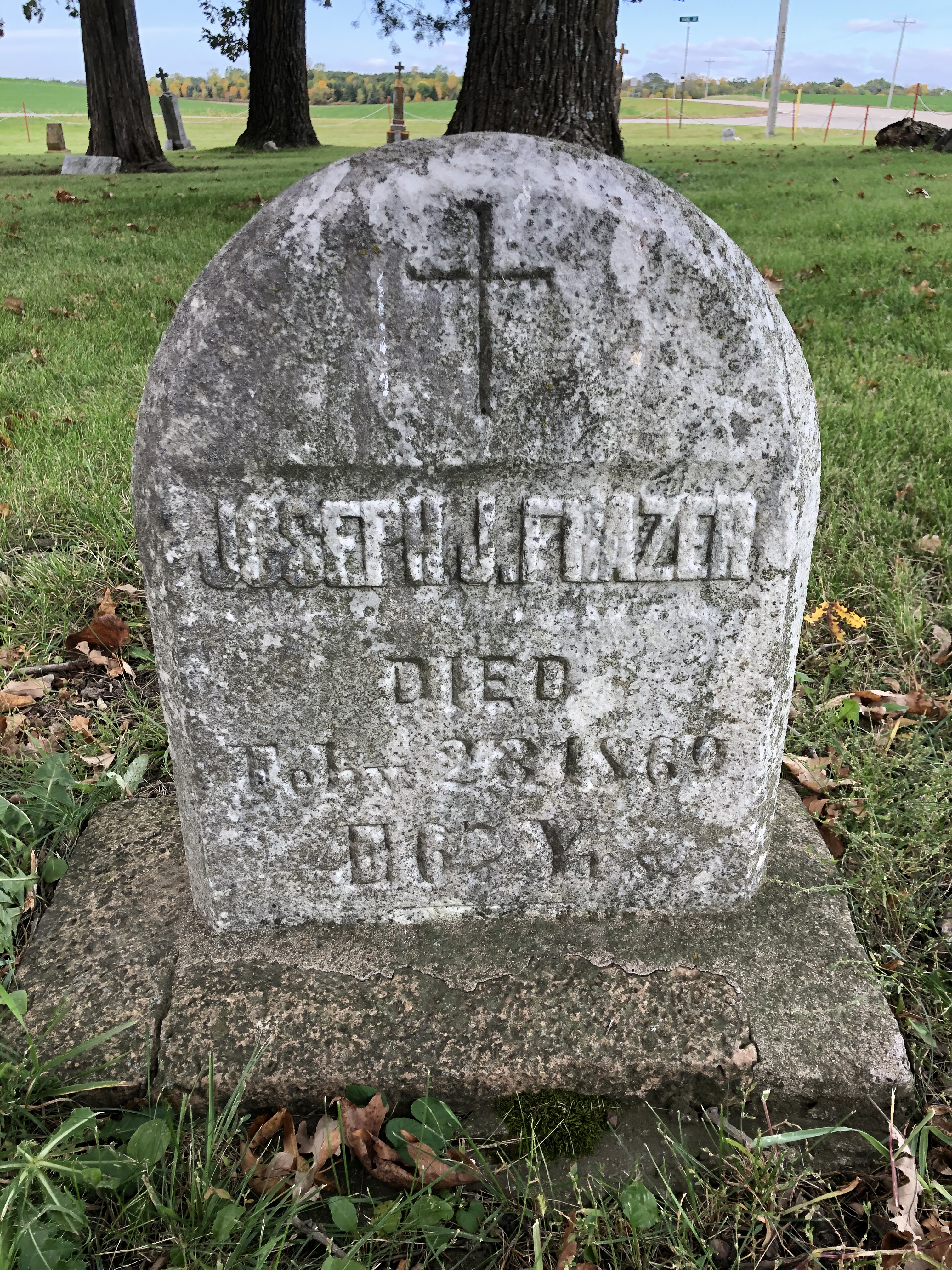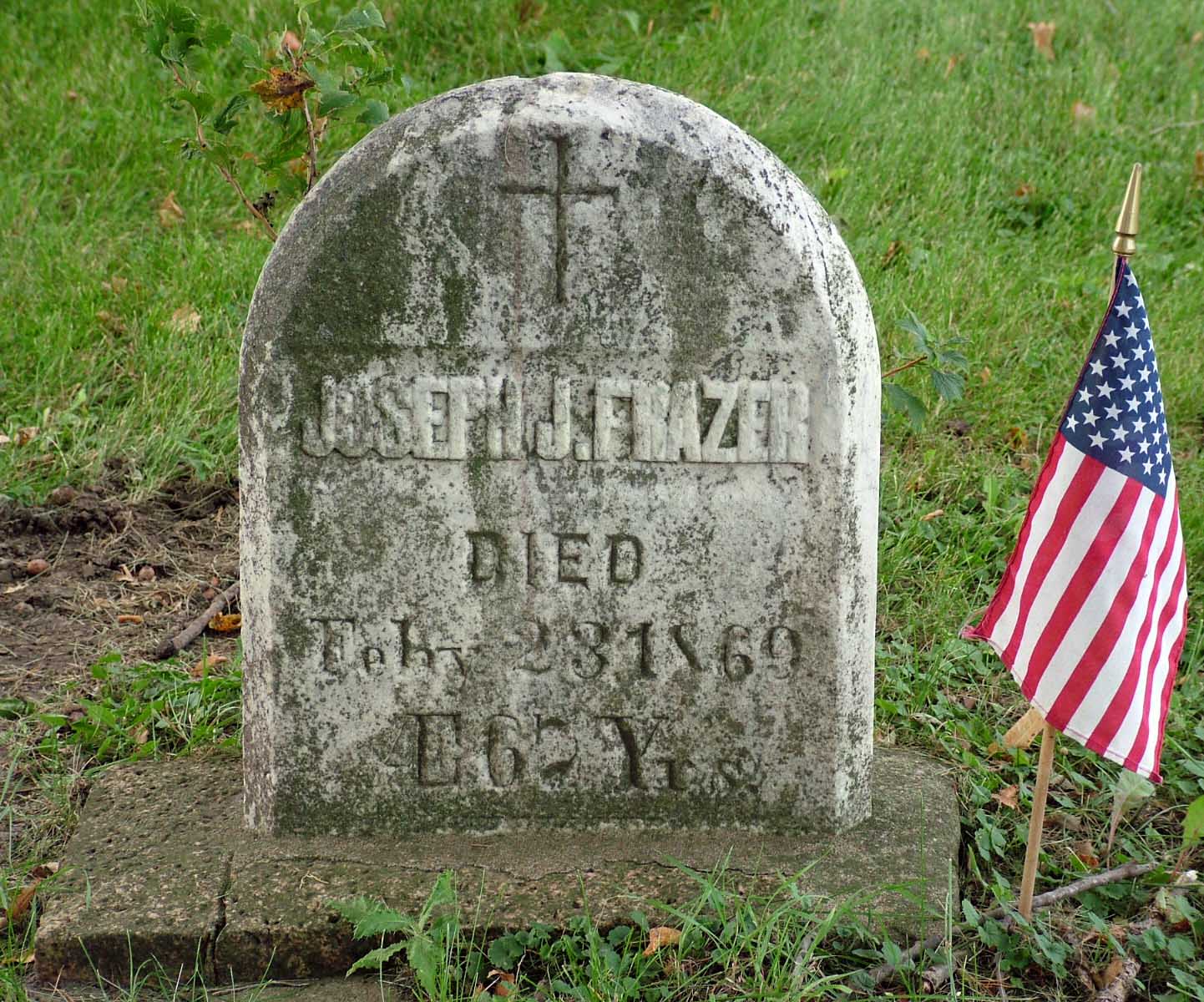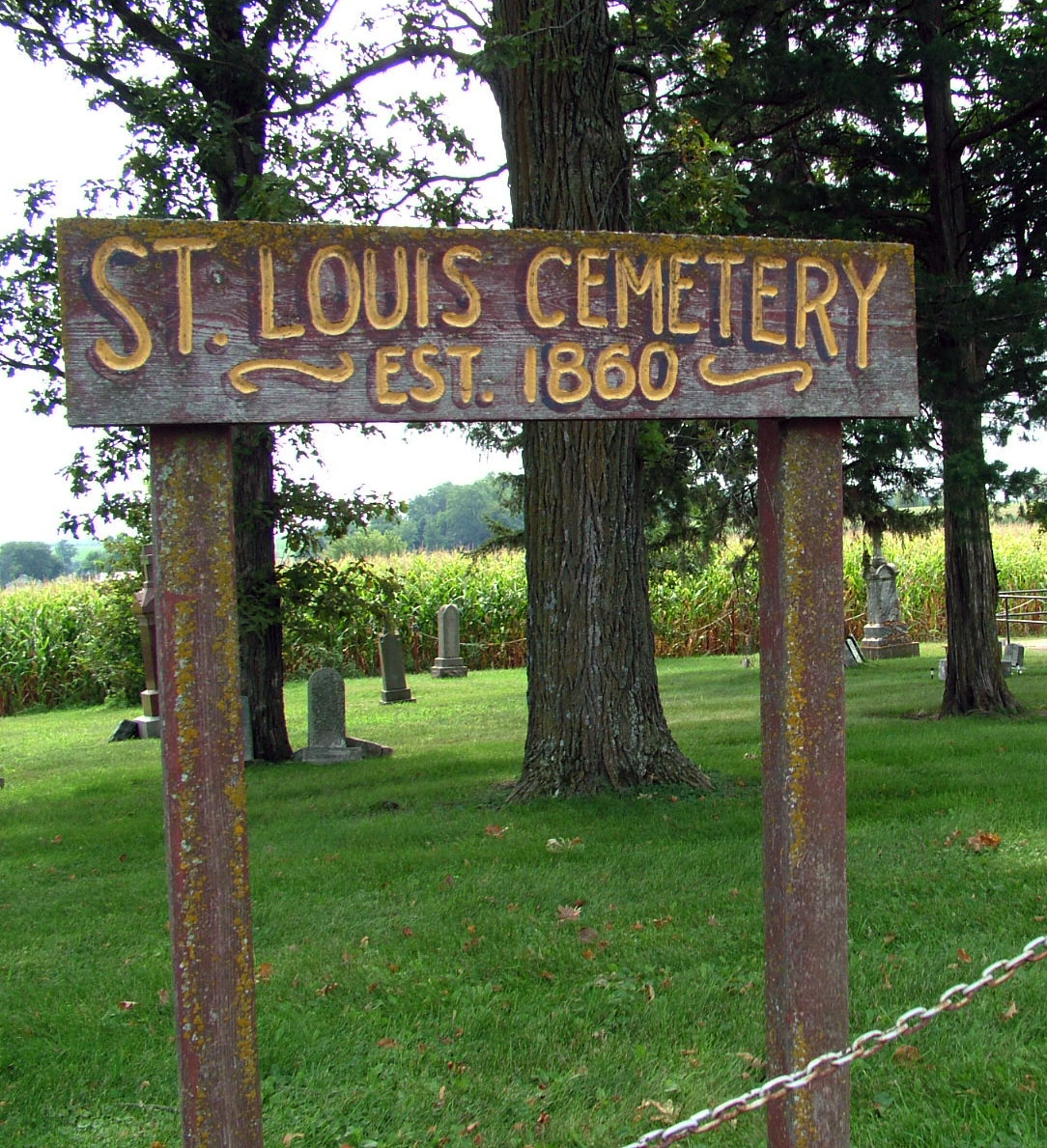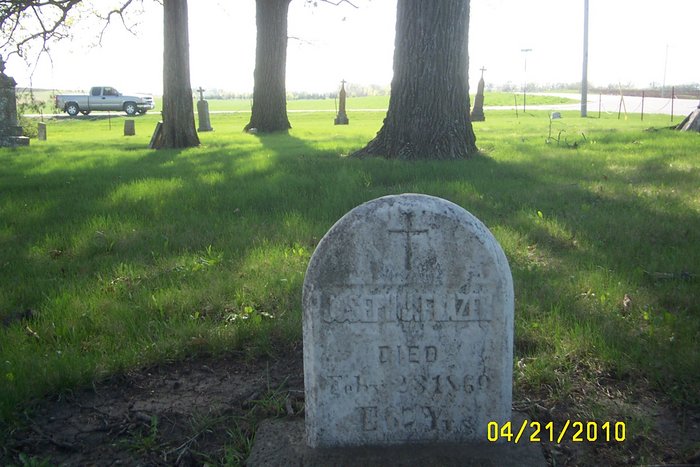He was the son of James Frazer, a British fur trader, and Hazzodawin, a Dakota woman who was the half-sister of Mdewakanton Chief Red Wing.
He lived as a Dakota for thirty-five years, then learned the English language and adopted the ways of the whites. He traded furs until he settled on a farm in 1855. In 1862, he served as a scout during the US-Dakota War. He was known as the best scout, hunter, and trapper in the territory. At this time, he was in his sixties and could outrun and outfight most men half his age.
He was at the Lower Agency when the US-Dakota War broke out on August 18, 1862. He managed to escape to Fort Ridgely, which was under the command of Lieutenants Sheehan and Gere of the 5th Minnesota Infantry. When he arrived, he offered his services to Lt. Gere, who immediately placed him on picket.
On Wednesday, August 20, 800 hostile Dakota gathered in one of the ravines around the fort and attacked that afternoon. The 5th Minnesota Infantry and volunteer citizen soldiers at the fort were greatly outnumbered. However, they managed to defend themselves and hold the fort, mainly due to the artillery guns manned by Sgt. Jones and his men. Jack Frazer was one of the defenders of the fort that day.
At sunset, the Dakota returned to Little Crow's village. A storm was brewing, and it began to rain. Lieutenant Sheehan's greatest worry was about reinforcements. Would they arrive before the next attack? He decided to send dispatches to the capital to impress on Governor Ramsey the urgency of the situation. Jack Frazer volunteered to deliver them.
He set out in the middle of the storm and rode through the night. The next day, he reached St. Peter, where Henry Sibley and his soldiers were camped. Sibley had been commissioned by Gov. Ramsey to command the troops that were being sent to southwest Minnesota to defend the white settlers during the uprising. For reasons unknown to this day, Frazer exaggerated his report to Sibley about the attack on Fort Ridgely. He told Sibley that the Dakota had at least 1500 mounted warriors at the Lower Agency alone, that the entire Sioux nation was involved in the uprising and that they probably had up to 5,000 warriors. He said he could not guarantee that Fort Ridgely was still in military hands; that it may already have been overtaken, and that there was no point in Sibley risking his troops by hurrying toward it.
He counted Henry Sibley as an old friend and hunting companion, and joined Sibley's relief force at St. Peter. However, his grim report had increased Sibley's caution, so Sibley remained with his troops at St. Peter, waiting for supplies and reinforcements. Sibley's entire force did not arrive at Fort Ridgely until August 28.
More battles were fought through September; the last battle at Wood Lake was decisive for the Minnesota regiments. The Dakota either surrendered or fled into Dakota Territory. Due to food and supply shortages, homes being destroyed (on both sides), and hostilities from the whites, the military moved the Dakota who surrendered and their families to Fort Snelling for the winter. Jack Frazer is listed in the census for Dec. 2, 1862, as residing at Fort Snelling. However, his wife is not listed.
The war against the Dakota continued the following summer, escalating into what would become known as the Indian Wars. When Sibley led an expedition to the Missouri River, Jack Frazer was one of his scouts.
After the expedition, from December 1866 through March 1867, Sibley published Iron Face's biography, "The Adventures of Jack Frazer: Frontier Warrior, Scout, and Hunter" in a series of articles for the St. Paul Pioneer newspaper.
Frazer is mentioned on the sign that briefly describes the history of the St. Louis Cemetery. : "He made a heroic and successful effort to warn the Minnesota military troops of an attack by the *Sioux Indians around New Ulm. As a tribute to Frazer's efforts, General Henry Sibley had a headstone placed on his grave."
(c) Copyright 2009 Cindy K. Coffin
* Some hostile members of the Dakota tribe, not the entire tribe or Sioux Nation
He was the son of James Frazer, a British fur trader, and Hazzodawin, a Dakota woman who was the half-sister of Mdewakanton Chief Red Wing.
He lived as a Dakota for thirty-five years, then learned the English language and adopted the ways of the whites. He traded furs until he settled on a farm in 1855. In 1862, he served as a scout during the US-Dakota War. He was known as the best scout, hunter, and trapper in the territory. At this time, he was in his sixties and could outrun and outfight most men half his age.
He was at the Lower Agency when the US-Dakota War broke out on August 18, 1862. He managed to escape to Fort Ridgely, which was under the command of Lieutenants Sheehan and Gere of the 5th Minnesota Infantry. When he arrived, he offered his services to Lt. Gere, who immediately placed him on picket.
On Wednesday, August 20, 800 hostile Dakota gathered in one of the ravines around the fort and attacked that afternoon. The 5th Minnesota Infantry and volunteer citizen soldiers at the fort were greatly outnumbered. However, they managed to defend themselves and hold the fort, mainly due to the artillery guns manned by Sgt. Jones and his men. Jack Frazer was one of the defenders of the fort that day.
At sunset, the Dakota returned to Little Crow's village. A storm was brewing, and it began to rain. Lieutenant Sheehan's greatest worry was about reinforcements. Would they arrive before the next attack? He decided to send dispatches to the capital to impress on Governor Ramsey the urgency of the situation. Jack Frazer volunteered to deliver them.
He set out in the middle of the storm and rode through the night. The next day, he reached St. Peter, where Henry Sibley and his soldiers were camped. Sibley had been commissioned by Gov. Ramsey to command the troops that were being sent to southwest Minnesota to defend the white settlers during the uprising. For reasons unknown to this day, Frazer exaggerated his report to Sibley about the attack on Fort Ridgely. He told Sibley that the Dakota had at least 1500 mounted warriors at the Lower Agency alone, that the entire Sioux nation was involved in the uprising and that they probably had up to 5,000 warriors. He said he could not guarantee that Fort Ridgely was still in military hands; that it may already have been overtaken, and that there was no point in Sibley risking his troops by hurrying toward it.
He counted Henry Sibley as an old friend and hunting companion, and joined Sibley's relief force at St. Peter. However, his grim report had increased Sibley's caution, so Sibley remained with his troops at St. Peter, waiting for supplies and reinforcements. Sibley's entire force did not arrive at Fort Ridgely until August 28.
More battles were fought through September; the last battle at Wood Lake was decisive for the Minnesota regiments. The Dakota either surrendered or fled into Dakota Territory. Due to food and supply shortages, homes being destroyed (on both sides), and hostilities from the whites, the military moved the Dakota who surrendered and their families to Fort Snelling for the winter. Jack Frazer is listed in the census for Dec. 2, 1862, as residing at Fort Snelling. However, his wife is not listed.
The war against the Dakota continued the following summer, escalating into what would become known as the Indian Wars. When Sibley led an expedition to the Missouri River, Jack Frazer was one of his scouts.
After the expedition, from December 1866 through March 1867, Sibley published Iron Face's biography, "The Adventures of Jack Frazer: Frontier Warrior, Scout, and Hunter" in a series of articles for the St. Paul Pioneer newspaper.
Frazer is mentioned on the sign that briefly describes the history of the St. Louis Cemetery. : "He made a heroic and successful effort to warn the Minnesota military troops of an attack by the *Sioux Indians around New Ulm. As a tribute to Frazer's efforts, General Henry Sibley had a headstone placed on his grave."
(c) Copyright 2009 Cindy K. Coffin
* Some hostile members of the Dakota tribe, not the entire tribe or Sioux Nation
Family Members
Advertisement
Records on Ancestry
Sponsored by Ancestry
Advertisement
